-
PROVIDERS
Read more
Browse our latest selection of abstracts, manuscripts, and presentations.
- LIFE SCIENCES
-
PATIENTS
It's About Time
View the Tempus vision.
- RESOURCES
-
ABOUT US
View Job Postings
We’re looking for people who can change the world.
ALGORITHMIC TESTS
The Tempus algorithmic test platform leverages our molecular and clinical database, CAP/CLIA lab, and clinician network to develop tests that help inform the treatment of cancer patients.
Laboratory Developed Tests
AI-DRIVEN HRD TEST
Tempus HRD is a laboratory developed test to predict the probability of a patient’s cancer having a phenotype characterized by the inability to repair DNA breaks via the homologous recombination repair (HRR) pathway, known as homologous recombination deficiency (HRD). It is available as an additional test for patients who are tested with Tempus xT or xR.
For ovarian and breast cancer, where DNA based methods of HRD detection are common or under investigation, Tempus HRD provides a result based on DNA genome-wide loss of heterozygosity (GWLOH) or evidence of biallelic BRCA1 or BRCA2 loss from the xT test. For patients with other cancers, Tempus HRD provides an HRD score based on whole transcriptome RNA expression using data from the xR test.
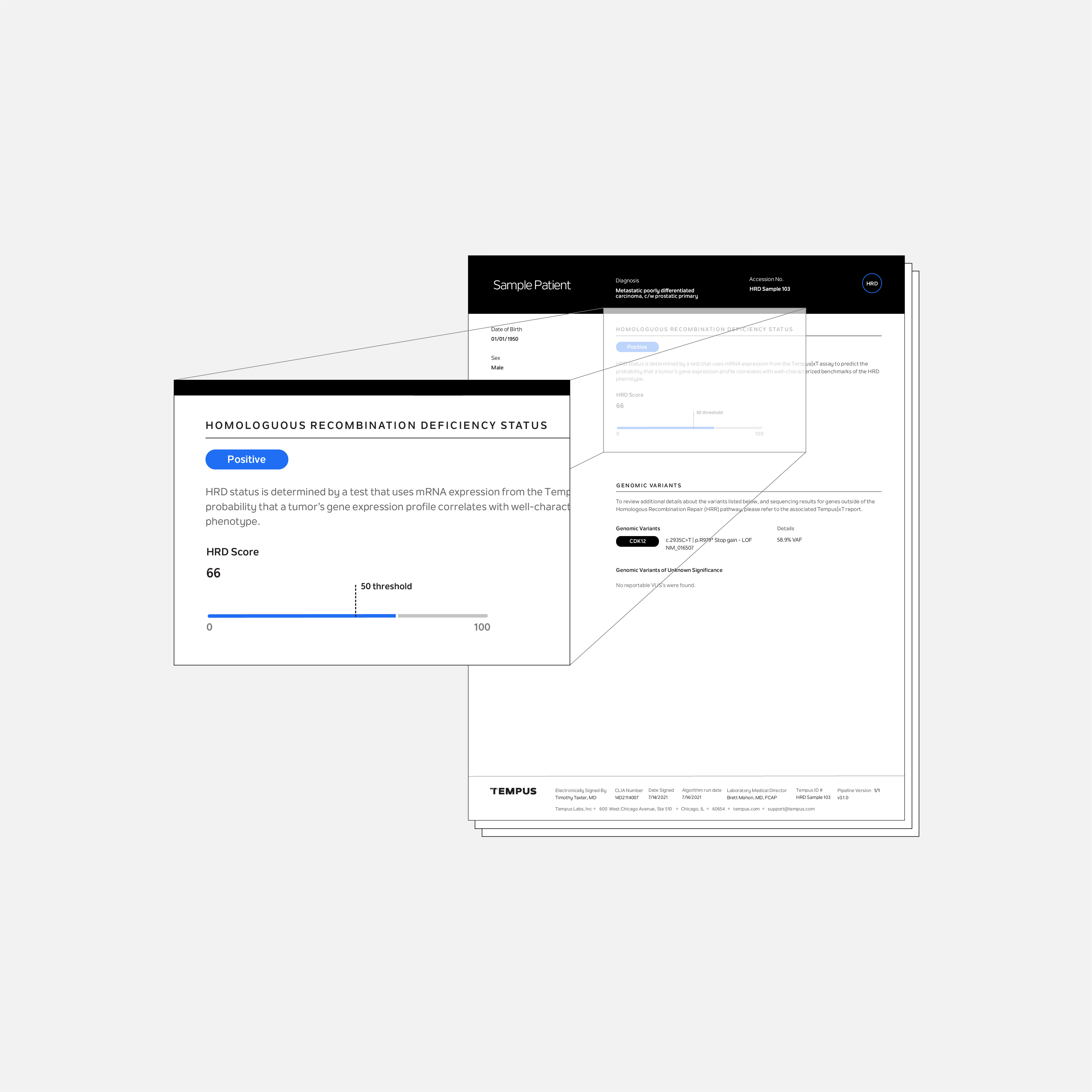
Tempus HRD Advantages
No additional tissue required
HRD may be ordered as an-add on with xT Solid Tumor/Normal Match & xR Combination, xT Solid Tumor Only & xR Combination, or xR RNA seq.*
*xT solid tumor + normal match DNA seq required for breast and ovarian cancer HRD testing. All other cancers require xR RNA seq.
A more complete patient view in one test
Gain additional insight into a patient’s tumor molecular phenotype on top of the genomic profiling results assessed by xT or xR.
AI-DRIVEN TO TEST
The Tempus Tumor Origin (TO) test uses tumor RNA expression results to predict the patient’s most likely cancer type(s) from 68 possible cancer types. The Tempus TO test was developed using a large internal database of clinical and annotated molecular tumor data.
The intended use of the TO test is for cancers of unknown primary and cases for which the available diagnostic information, such as imaging and immunohistochemistry results, do not provide a definitive diagnosis. When paired with xR, the TO results may provide insight into the patient’s diagnosis and tumor site of origin that may be used to inform patient care and clinical trial eligibility.
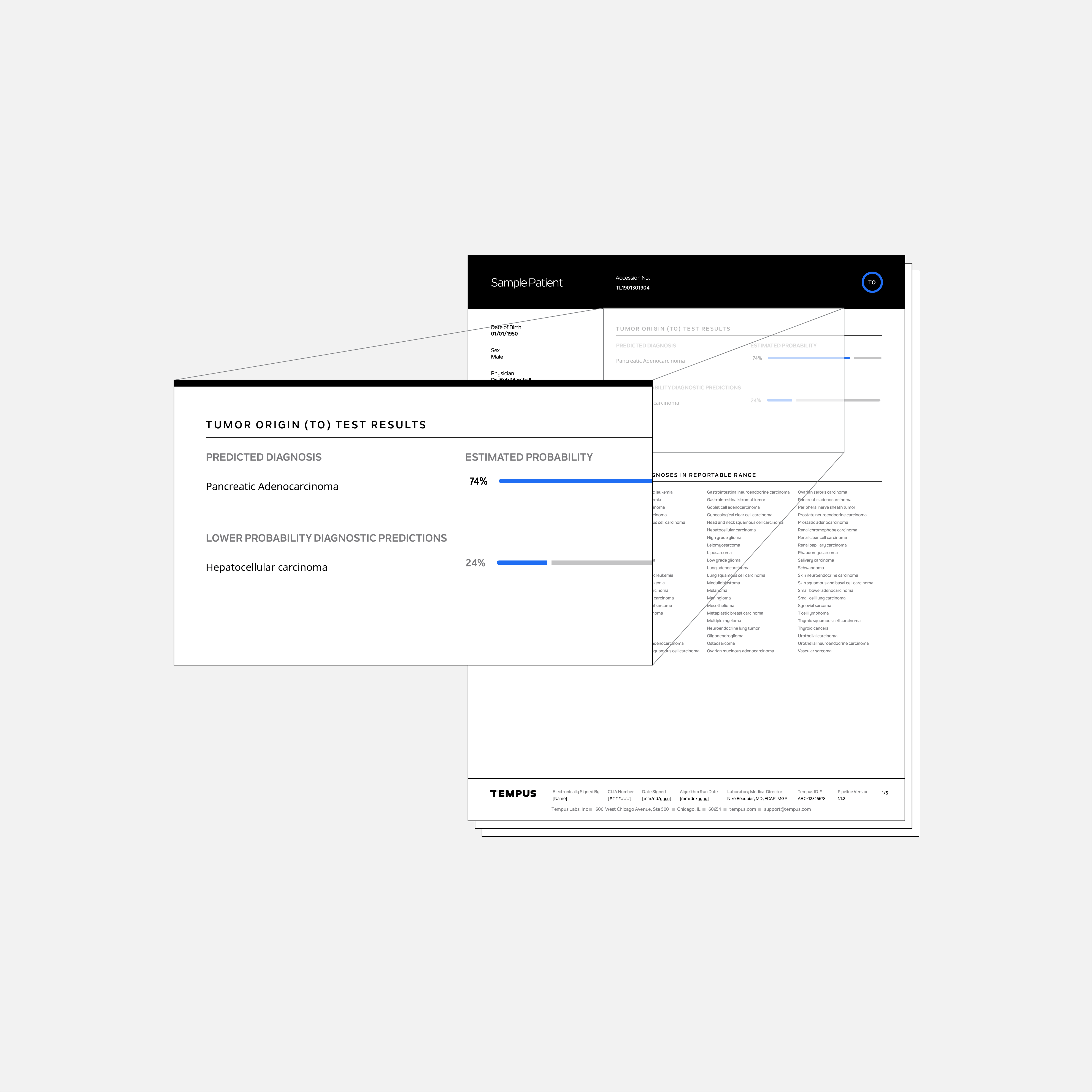
Tempus TO Advantages
No additional tissue required
TO can be ordered as an add-on with xT Solid Tumor/Normal Match & xR Combination, xT Solid Tumor Only & xR Combination, or xR RNA seq.
Coverage of many cancer types
The test characterizes 68 possible cancer types to provide precise information for guiding treatment decisions.
DPYD TEST
The DPYD gene encodes the enzyme dihydropyrimidine dehydrogenase (DPD), a key protein involved in 5-FU/Capecitabine metabolism.
The Tempus DPYD test is designed to help physicians to better identify patients who may be at risk for toxicity and serious adverse effects from 5-FU/Capecitabine. It is applicable in situations where 5-FU/Capecitabine treatments are considered, especially colorectal, breast, pancreatic, and other GI cancers.
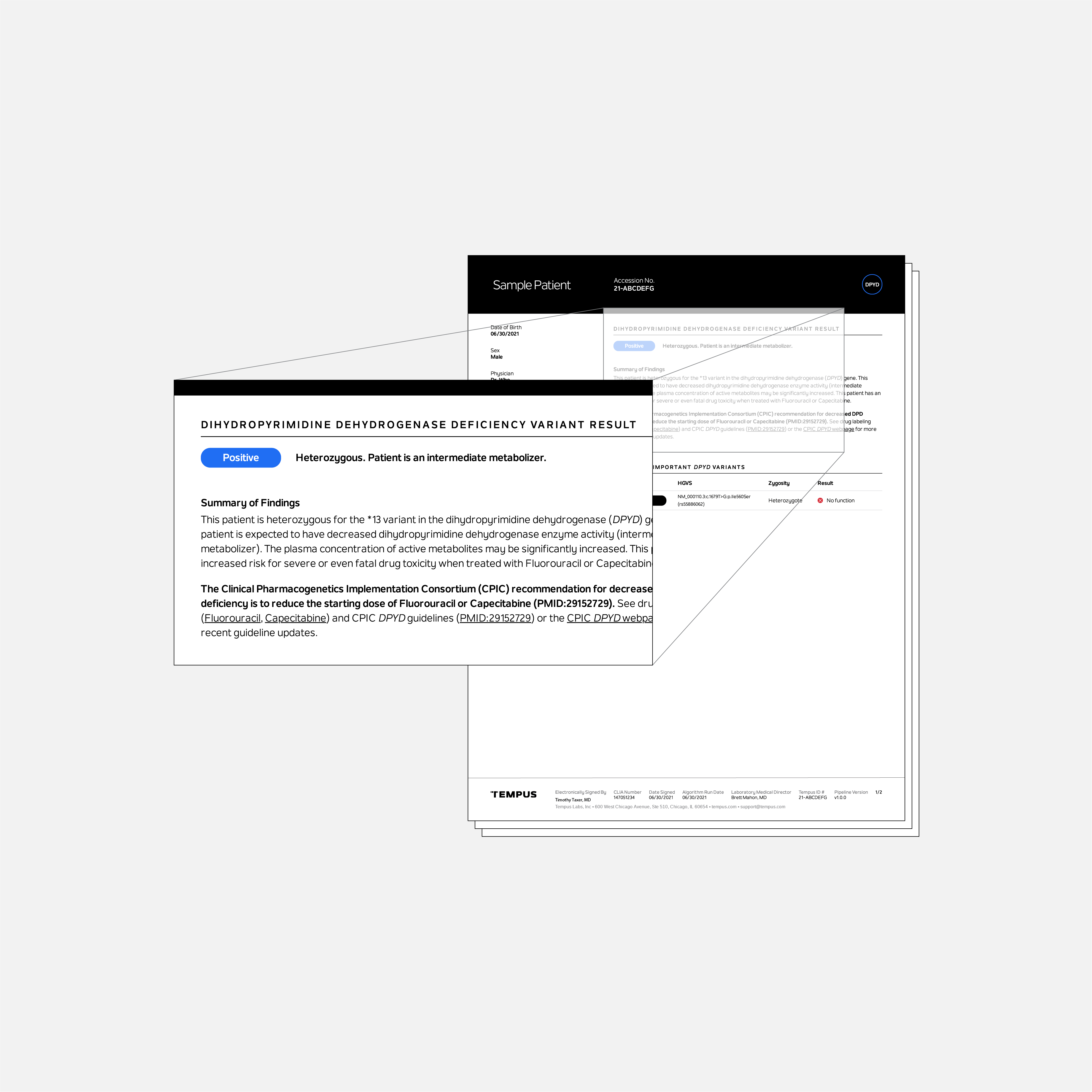
Tempus DPYD Advantages
No additional tissue required
DPYD can be ordered as an add-on with xT Solid Tumor/Normal Match & xR Combination.
Expanded toxicity risk assessment
DPYD analysis covers five SNVs in DPYD genes, providing a more complete patient profile.
UGT1A1 TEST
The Tempus UGT1A1 test identifies patients at elevated risk for toxicity from treatment with irinotecan, sacituzumab govitecan, and/or belinostat.
The Tempus UGT1A1 test identifies certain genetic polymorphisms in the UGT1A1 gene. These polymorphisms are associated with an elevated risk of developing toxicity to irinotecan, sacituzumab govitecan, and/or belinostat based on drug labeling. A patient who has one of the following genotypes will receive a positive test result: *28/*28, *6/*6, and *6/*28.
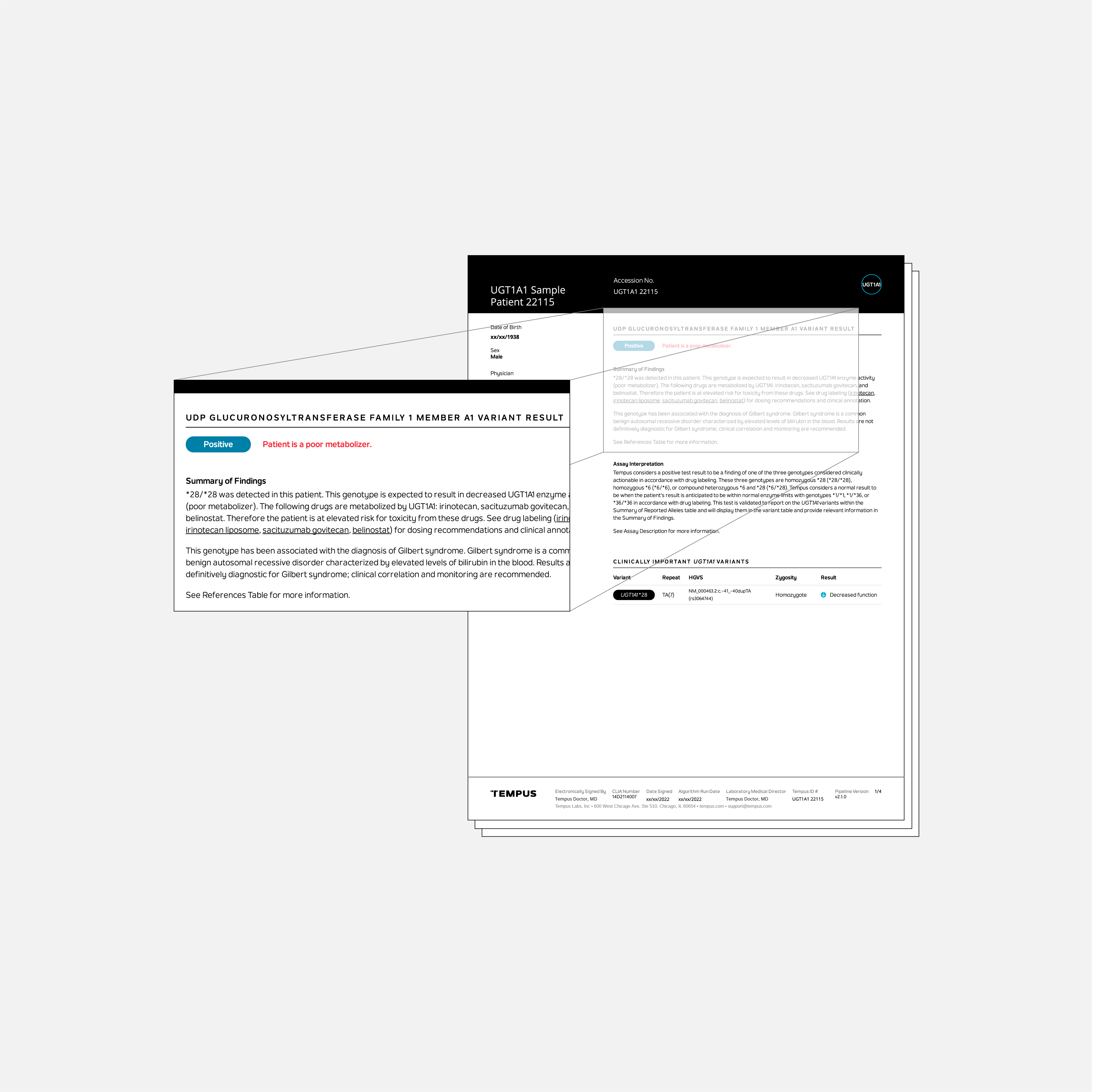
Tempus UGT1A1 Advantages
No additional tissue required
UGT1A1 can be ordered as an add-on with xT Solid Tumor/Normal Match & xR Combination.
Expanded toxicity risk assessment
The Tempus UGT1A1 test identifies 5 variants from 3 locations on the UGT1A1 gene, for a complete patient profile.
PurISTSM
Tempus’ PurISTSM test identifies the molecular subtype of patients with unresectable stage III or stage IV pancreatic ductal adenocarcinoma (PDAC).**
PurIST utilizes RNA sequencing information to classify patients with PDAC into either a basal or classical subtype, and may help guide clinical management. Patients with a classical subtype were found to have an overall better prognosis and superior median overall survival when treated with first-line FOLFIRINOX, compared to patients with a basal subtype.1,2
1. Rashid NU, et al. Purity independent subtyping of tumors (PurIST), a clinically robust, single-sample classifier for tumor subtyping in pancreatic cancer. Clin Cancer Res. 2020;26(1):82-92. doi:10.1158/1078-0432.CCR-19-1467.
2. Wenric S, Davison JM, Guittar J, et al. Real-world data validation of the purist pancreatic ductal adenocarcinoma gene expression classifier and its prognostic implications. medRxiv. Published online February 24, 2023. doi:10.1101/2023.02.23.23286356.
**PurIST℠ is only available for retroactive order on xR tests sequenced beginning June 1, 2023.
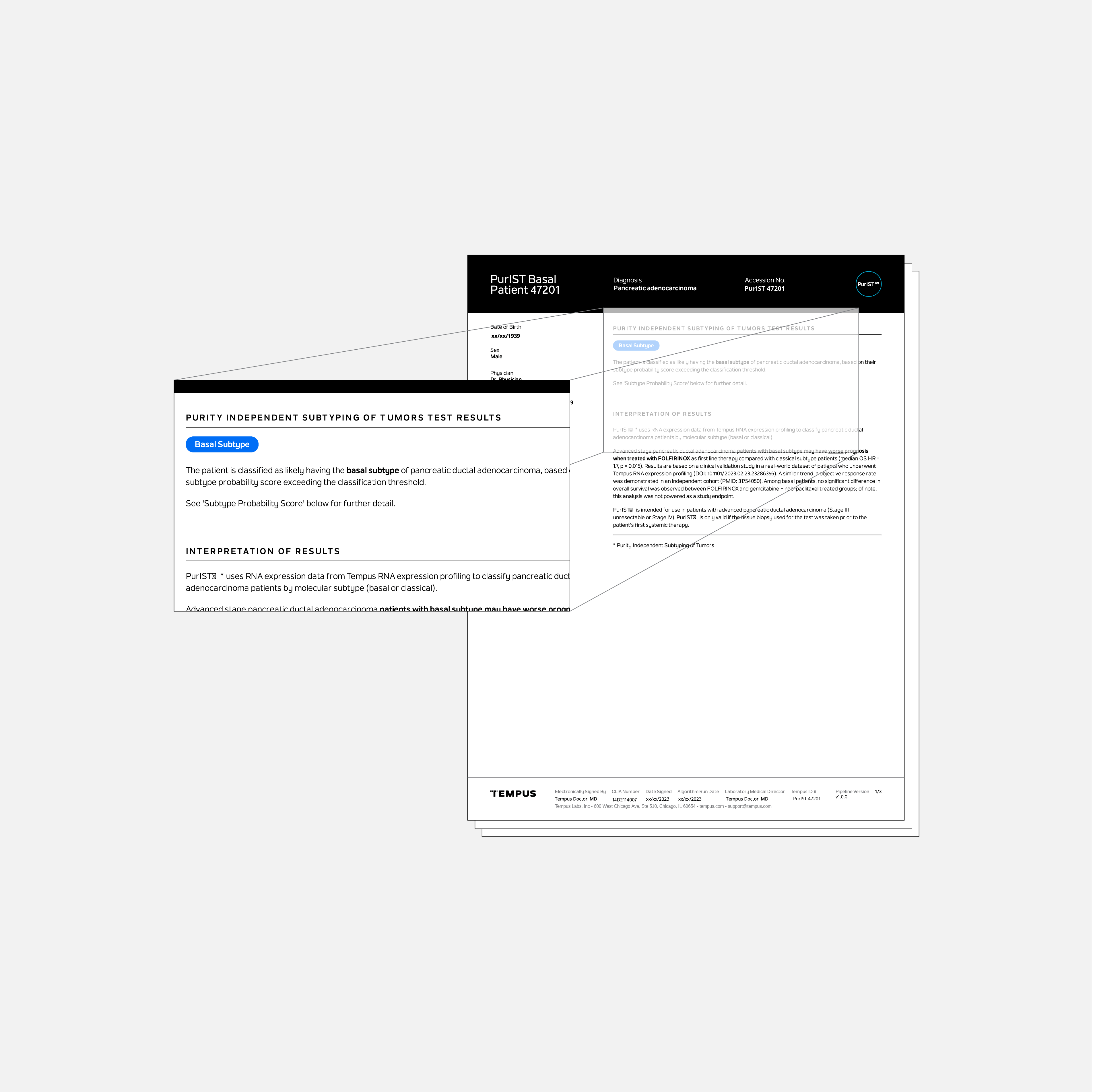
Tempus PurIST Advantages
No additional tissue required
PurIST can be ordered as an add-on with xT Solid Tumor/Normal Match & xR Combination, xT Solid Tumor Only & xR Combination, or xR RNA seq.
A more complete patient view in one test
Gain additional insight into a patient’s tumor molecular phenotype on top of the genomic profiling results assessed by xR.